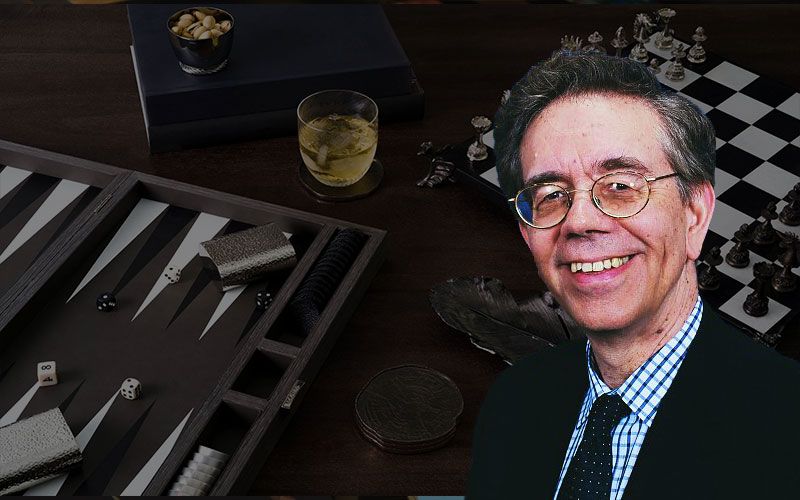
Loading board
This problem is taken from a game in the Athens finals between Billy Horan and I in 1994. (Billy was White, I was Black.) The game was early in the match and the score wasn’t relevant, so I’ve recast it as a cash game position.
If you’ve taken up the game recently you may not be familiar with the name, but Billy Horan was one of the top three or four players in the world for a ten-year stretch, from the late 1980s to the late 1990s. During that time, he won several international tournaments, as well as two of the six World Cups.
Horan’s style was deep and complex. He actually liked playing back games, but his command of middle-game maneuvering was so good that it was very rare to see him in a game that was poorly timed. He had a well-developed knack for sensing when a back game was becoming difficult to play, and switching into some other formation before his game got critical.
Billy and I played a lot of matches in those years, and since he liked back games and I liked defending against them, our matches were often lively and complicated. This position is a case in point. After I rolled 6-5, it was time to stop and assess things more closely. The obvious play, of course, was just 16/10 11/6. If White’s game were poorly-timed, I’d make this play without much thought. Here, however, White’s game is pretty well timed. If I make the obvious play and White rolls a 6, he’s in great shape. It will take me several moves to move my checkers to the inner board, and in that time White will be releasing checkers from his 20-point and taking control of the outfield. Even if White rolls a poor shot at first, he should be able to remake his board by the time the crisis comes.
During this period, I was experimenting with a new idea for attacking massive back games (positions where the back game player has more than two points), involving breaking the front points of the prime rather than clearing from the back. The idea was to block the high points of the back game while allowing the deep points to move. This method frequently worked by forcing the back game player into more of a holding game formation that was easier to play against.
After I realized that I didn’t like 16/10 11/6 much, I started looking at 16/11 7/1. This keeps the stack of checkers on the 20-point cooped up for a bit, while allowing the checkers on the 22 and 23-points to move. Now the rolls of 4-6 and 5-6 immediately force White to break a key point, while other fours and fives give him a choice between moving off one of his points or breaking his board. This move had a good feel, so I played it and went on to win the game. (Billy eventually won the match, though.)
The play doesn’t really involve any specific calculation. It’s based more on the idea that with White’s army split into two distinct and widely-separated chunks (seven checkers in his home board, eight in mine, and no one in the middle quadrants), it’s hard for White to handle a prolonged game. Since I’ve only killed one checker, I should be able to handle a long game pretty well.
Over the years, I checked this position against the bots as they evolved. The early bots, Jellyfish and the first iterations of Snowie, didn’t like this play either in their evaluations or their rollouts. Snowie 4 still evaluated the play as a big error, but its 3-ply rollout moved the play to the top of the list. XG’s results were almost identical. These results still aren’t conclusive because nobody really knows what correct play looks like in these complicated games, but it’s indicative that 16/11 7/1 might be on the right track.